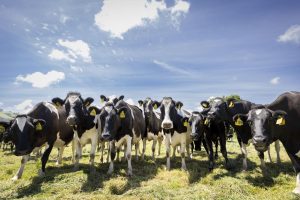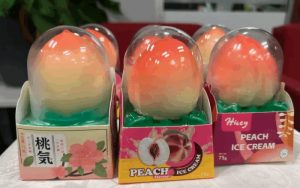
A dairy cow can be destroyed in three months with worn or incorrect liners and poor hygiene, according to New Zealand specialists.
While – at best – Kiwi farmers change their liners once a season, there is definitive science that supports the unilateral global recommendation to change them every 2500 milkings.
Loosely calculated, it means on a 1000-cow dairy (with a 54-bail rotary) a liner change is (conservatively) recommended every 67 days (or at least four times) every 305-day lactation.
Multiple studies prove if dairy farmers use old liners on fresh cows, the damage to teat-ends starts immediately, and – for two-year-olds – it can be catastrophic. It also throttles peak production with an estimated (on average) 10-20% negative impact on total production – often resulting in premature culling because of mastitis or other health challenges coming in off the back of it.
The liner is the interface between the milking machine and the cow. Farmers can’t see them, but as they age, they accumulate milk and chemical residues, which are embedded in the liner-contact surfaces.
These calcium and phosphorus-based deposits cause a roughened milk-stone surface – like rubbing sandpaper on the teat.
Studies have proven that the friction happens 40-60 millimetres from the bottom of the mouthpiece – where the teat-ends touch the liner. It transforms the initial safe, low-friction virgin liner surface into a health threat for every cow. Because the liner barrel is under tension its entire life, it is typically more than 3% longer after 2500 milkings. Those dimensional changes are a result of the constant creep and relaxation of the material and the structure.
In high-production herds, the first clue that there is a problem with the liners will be a somatic cell count (SCC) spike. Falling production follows immediately.
Acids that are approved for use in a dairy and that damage liners include Sulphuric Acid, Glycolic Acid and Peracetic Acid (Hydrogen Peroxide).
Out of sight, out of mind
Senior vet and co-owner of Vet South (based in Winton) Sunita McGrath BVSC confirms much of her work correcting SCCs and teat-end damage comes down to the liners.

“All the stuff we say about changing liners seems scientific,” Sunita says. “Farmers don’t see the inside of the liners day-to-day, so they don’t see the change in how the rubber moves, and the loss of elasticity.
“If they did actually see how the liner acts on the teat ends once they have passed their use-by date, they would understand the benefits of regular liner changes. As it stands, I’d imagine very few farmers are changing their liners religiously.”
Sunita assesses a lot of Southland cows, and she says teat-end damage remains a significant challenge to achieving good milk quality on a lot of farms.
“I’ve done quite a few visits lately where the farmers think they have a few cows with teat-end damage. When they say that, I know it’s going to be bad or potentially horrendous, because while they notice dry or cracked teats, they struggle to assess teat-end health.”
She says to avoid mastitis, there are a number of factors involved, but changing liners within the recommended time frames is definitely high on the list.
“Mastitis is multi-factorial, but if farmers want to tick all the boxes, get that SCC down and improve teat-end health, then regularly changing their liners is definitely something I’d recommend. If you don’t have good teat health, you will have mastitis,” she says.
“Bacteria on old liners is significant, but I think the teat-end damage from ineffective liners is probably the bigger concern. Often farmers don’t link the two.”
Problem solved
Southland farmers Mitchell and Kate Johnston milk 1000 cows through a 54-bail rotary all year around.
Mitchell was struggling with several issues in his dairy last season – including stray voltage. With cows projected to average more than 730kg milksolids this season, the detail is vital. Mitchell brought in dairy technician specialist, Lars de Kruijf (Milk R Us) to get to the bottom of the problem.
“When we came into this farm the dairy was already built, and the report on it from the company was 50 pages of nothing,” Mitchell says.
“The hardest thing with farming is sifting through the truth from the rest. Lars has been the real deal. He changed things we didn’t even know could be changed. He’s done lots of small things that have made a huge difference for us.”
One of Lars recommendations was to switch to the lighter and revolutionary Milkrite Impuls triangular moulded shells and liners. Mitchell wasn’t new to the gentle three-point milking science because some of his colleagues had already made the switch.
The design includes a revolutionary (and patented) air vent in the mouthpiece (at the teat entry point) of each shell. Importantly, that means the vent introduces air above the milk-flow, stopping splash-back (logically lowering the chance of cross-contamination between cows and keeping teats dry).
Its more even three-point milking system also makes milking and cup removal gentle, eliminates cup-slip, speeds milking, and improves teat health.
“Half a dozen guys in our discussion group already had them and another friend had them too. Originally, I thought instead of one air vent, I’d have four to worry about. But they have been amazing,” Mitchell said.
They have been in a year now, and Mitchell says his SCC this year is travelling at 90,000 (down from an average of 140,000). The only cow he was treating was for footrot.
“Before we installed the new cups we’d always run two people in the shed all year because we had cows that didn’t milk out properly. Now, we don’t worry about that at all, and the cows are a lot more settled.”
The biggest upside had been breaking in their two-year-olds.
“Out of 200 heifers there might have been two that kicked a bit. This season we had heifers walking on for their second or third milking and they were just dripping milk on the platform, and we’d never had that before.
“Before we changed, we legitimately had all six people on the farm in the shed when we were milking the heifers. But once we got on top of the voltage and a few other things thanks to Lars, this spring was a walk in the park.
“The bowls are bigger but the entire cluster is way lighter. Our milker [Bex Copley] is raving about them now because she can milk 1000 cows and she isn’t worn out.”
Mitchell says they probably used to change their liners closer to the 5000-milking mark. Now Lars lets him know when it’s time, and they are consciously operating within the 2500-milking recommendations.
“They are easy to change, to be honest. One guy did our whole shed in two hours. With the old ones we’d battle, and have to cut the old ones out. That was a bit of a grind.”
Man on a mission
Lars says finding solutions for farmers is what drives him. A former farmer himself, the Dutch-born technician resonated with the science within Milkrite.
Knowing that aging liners are thesingle biggest cause of chronic mastitisin herds, he remains a man on a mission.
“Farmers see a 25% improvement in their teat-end damage within the first four weeks with the triangular liners. One of my farmers had 66% mastitis cases in his herd when we put the new liners in. He’s now down to below 10%.
“Honestly, liners are such an important subject.
“It’s hard to believe so few New Zealand dairy farmers are aware of it.”

























